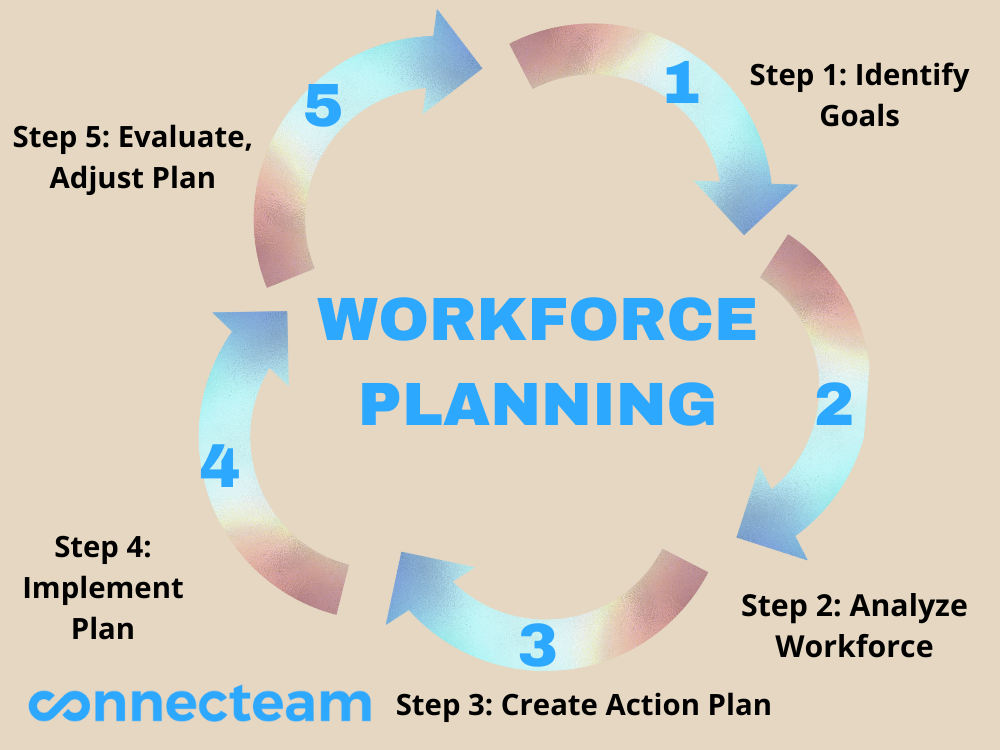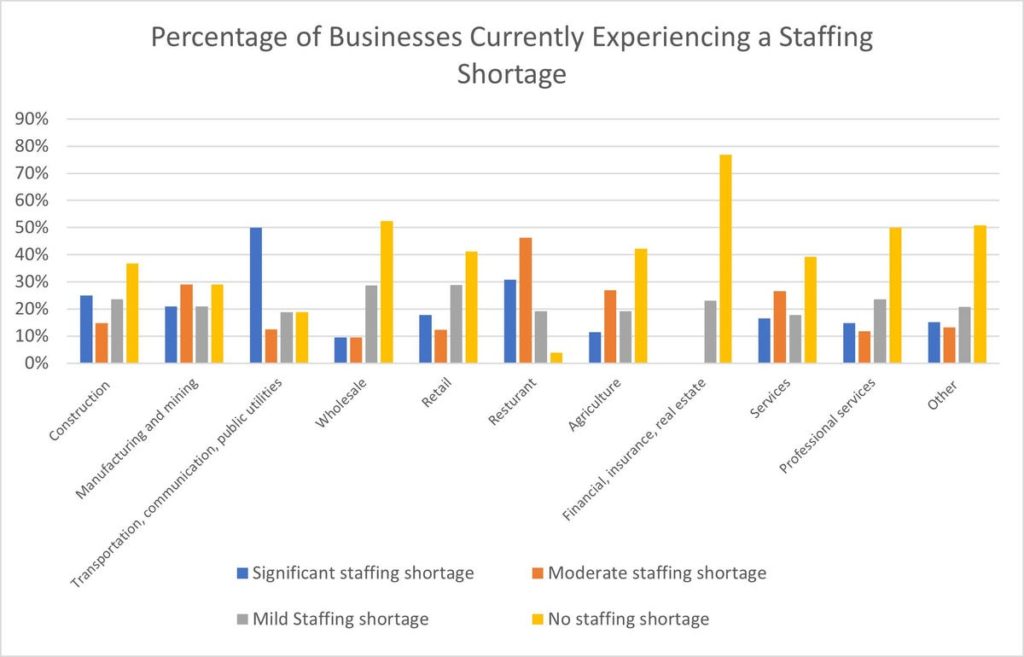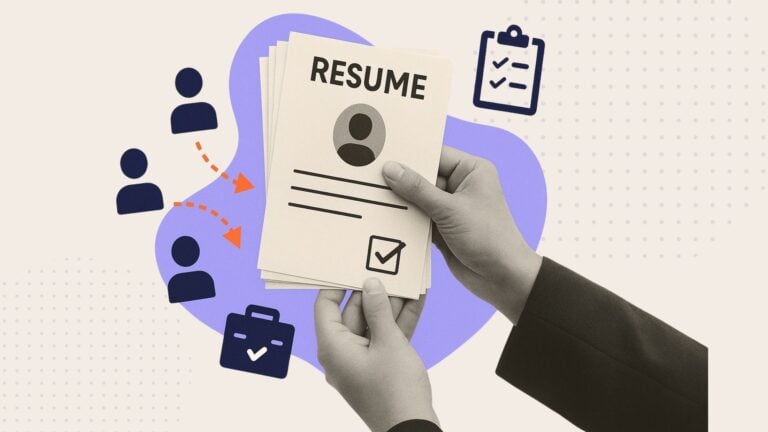All HR managers are looking for the right employees and skills to help their company reach its goals. A staffing model will make this process so much easier. We have put together some useful steps that will help you build an effective staffing model for your company.
If you are working in HR, then we bet you’re on the lookout for some cool, innovative ways to help your company get to where it wants to be.
This probably means…an effective staffing model.
I’ve worked in a couple of companies that have struggled to keep up with the growth they experienced.
It has often led to stressful environments and coworkers of mine have suffered because of it. It’s not pretty, and that’s an understatement.
That’s why your company needs some kind of staffing template to make sure that there are the right number of employees with the right bag of tools and skills to meet their goals.
What Exactly Is A Staffing Model?
In short, a staffing model is a collection of graphs, reports, charts and figures that gives you all the answers to help your company move to the next level.
By that, we mean things like the company’s current activity, needs and budgeting. Basically, it’s everything to do with how your team works – both financially and time-related.

When you break it down to its fundamentals, HR departments use staffing models to tell the future. It provides companies with the opportunity to highlight its current targets and to build a plan that helps to reach them.
There are two things that every top-class staff model will identify from the get-go. Firstly, you should work out how many employees your company needs to succeed. And secondly, what skills are those employees required to learn in order to meet your company’s needs?
The earlier that you can answer these two questions, the clearer the direction will be that your company needs to go in. It’s not rocket science.
This begs the question: How can you go about building an effective staffing model of your own? Scroll down to find out.
How To Build An Effective Staffing Model
-
Evaluate Your Company’s Goals
- What are the most important goals for the year ahead?
- In what areas does the company need to reorganize?
- What can HR do to make these changes?
-
Identify The Challenges Your Staffing Process Might Face
-
Analyze The Current Position Of Your Company
-
Identify Your Company’s Needs
-
Highlight What The Team Structure Currently Lacks
-
Put Together a Solution
-
Adjust Recruitment Strategy
- Keep tabs on specific job boards
- Brushing up on interview skills
- Updating job descriptions to suit current needs
- Organizing virtual meetups
- Hiring part-time employees and students
- Providing internships
- Using networking sites such as Linkedin
- Employee referrals
-
Hire Good Fits, Not Good Resumes
- Identify candidates with a good mix of skills and qualities that match the company culture and current direction
- Phone interviews
- Initiate face-to-face interviews
- Build a step-by-step onboarding process
-
Retain Your Employees
It makes sense that the first step in building a successful staffing model would be to look back on your current progress. The key is to evaluate your goals and the means that you use to reach them. Then ask yourself the following questions:
The answers to these simple questions are the foundation on which you build your entire staffing model.
You can’t just expect your staffing model to go off without a hitch. You need to anticipate that there might be problems that get in the way of the construction of your staffing model.
Truth be told – interior and exterior factors can be at play here. These can include things such as ever-changing laws, competition, or the way that a position in your company inevitably changes.
While these factors can obstruct your progress, identifying them early can inform what candidates you should be looking for during the recruitment process.
Identifying realistic goals and the challenges that affect them being met will allow you to move on to the next step. This is working out the current status of your company, especially from a staffing perspective.
In order to successfully analyze this, you need to collect data from a variety of areas. This includes the current employee skills the company possesses, its current resources, available staff, and so on.
If you know where your company is currently at in all of these areas, then you have a basis to build a staffing model from.

Once you have the foundation to build from and an endgame in mind, you can now start to identify the tools that your company requires in order to make step one of the process happen.
It’s too early to race to the finishing line. HR needs to continue spitballing ideas of how to make your original goals happen.
You can only truly identify what company needs if you realize what it’s currently missing – specifically in its team structure.
For example, your company might be lacking certain organizational tools or certain types of employees. Think carefully about what is currently missing from operations that you actually need.
Anyone can highlight problems in a company. If they are big enough, even entry-level employees will see them. But HR needs to be able to develop solutions for those problems. In this case, solutions refer to the new positions you want to fill.
Maybe the team needs another manager to carry some of the leadership responsibilities. Or you might need to bring in more experienced workers to steady the ship.
The solution completely depends on the goals set out in the previous steps. You will be able to decide what kind of employees you need to recruit or retain.

Your staffing model will determine how you choose to recruit future employees. It will depend primarily on what personnel your company needs at the moment in time. You might need to promote from within, rehire former employees, or hire new ones altogether.
Whatever the case may be, there are a number of recruitment strategies that HR can implement to outsource the employee they’re looking for. These include:
Whatever strategies you choose to use while recruiting, the company’s needs in the staffing model must always take priority.
It might be tempting to select the candidate with the most impressive resume. But if that person doesn’t match your needs, then it’s simply not a good fit.
In order to narrow down your choices sensibly, you should consider doing the following things:
At the end of the day, good fits can come in all shapes and sizes. They can have varying levels of experience and come from virtually any background. A good fit is a good fit.
While building the ideal team is a crucial step in your staffing model, keeping those employees around is just as important.
If the employees are adaptable, independent, helpful to one another and determined to improve, then you have a team that is worth retaining.
There are a number of steps that HR managers can take to implement successful employee retention:
– Perform frequent performance reviews
– Promote teamwork through bonding activities and exercises
– Provide employees with recognition where it’s due
– Give your employees perks (fringe benefits, for example)
These useful steps will bring all kinds of benefits, such as team morale, unity, and increased productivity.
Tools & Software To Help You Implement Your Staffing Model
According to a 2019 study, a staggering 67% of hiring managers believe that it is imperative to use the latest tech for staffing purposes. More and more HR managers have had it up to here with tedious methods such as pen and paper, spreadsheets and even phone calls.
Thankfully, there is a large selection of useful tools and software that can be used to help implement your staffing model once it has been built.
An all-in-one staffing app like Connecteam will help you streamline your daily operations. This kind of app allows HR to manage various aspects of their company, such as employee time tracking, shift scheduling, employee engagement, internal communication, and so much more. Connecteam ensures that you can manage your company while on-the-go.
Efficient shift scheduling: Assign shifts/jobs depending on requirements. Add important notes including time, address and other instructions, employees have the option to accept/reject shifts, etc.
Availability in real-time: Check employees’ availability and redistribute shifts as required. Also, create open shifts which workers can claim based on their qualifications and skills set – first come, first served!
Shift notifications: Receive notifications whenever an employee arrives, rejects, or doesn’t show up to their shifts.
Checklists and forms: Keep reporting processes quick and efficient through checklists. Create employee assessments, employee satisfaction and team performance surveys to share between upper management.

All company policies available: Employees can access all important company information in real-time, including handbooks, policies and manuals, etc.
Onboarding and training new hires: Use Connecteam to train new employees quickly and effectively. They can complete “read and sign” forms and various other kinds of mobile training in no time.
Automated time tracking/payroll Stay on top of work hours easily and inform workers automatically to ensure they are clocking in and out. Review how much time is being spent on each task and use data to inform the next staffing model round. Also, easily export timesheets to QuickBooks Online or Gusto for accurate, smooth payroll.
Internal communication: Keep teams in the know via notifications, updates and chats (both 1:1 and groups). Find out which employees have read the sent updates and send reminders to those who haven’t. Also, locate important details of all workers in the employee directory.
Make Your Staffing Model More Effective With Connecteam
Why Your Company Needs A Staffing Model
If at this stage you’re still on the fence, we get into why your company needs a staffing model in the first place.
As restrictions started to ease, companies rushed to grow their teams again. But they haven’t necessarily brought in employees with the right skills to meet their needs.In fact, according to a 2019 study, 52% of hiring managers claim that one of the main challenges of staffing is finding the right candidates.
Above we broke down step by step what it takes to build a successful staffing model as we enter a post-pandemic era. Before you know it, your team will be firing on all cylinders.
The Bottom Line On Staffing Models
As recent events have proven, internal and external factors can make it imperative for companies to rebuild and go back to the drawing board.
So whether you are working in manufacturing, healthcare, retail, transportation, hospitality, cleaning, or security – HR managers need to have a detailed plan when it comes to meeting their business’s needs, both in the short and long term.
A well-planned staffing model will provide HR with much needed insight into the current strengths and weaknesses of the company, what skills it is currently lacking, and what solutions it can implement to reach the set goals.
And once you have built your staffing model, you can then implement it using an all-in-one app to streamline your operations. If you have a plan, your company is already on its way to success.







